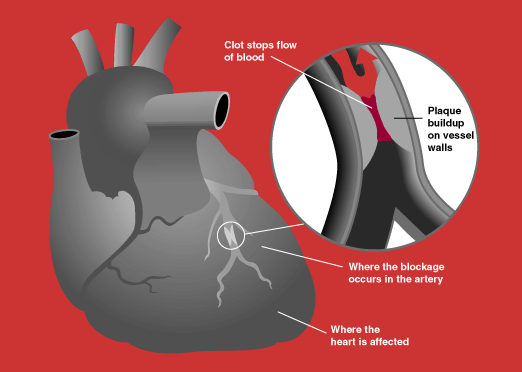|
Scimitar Syndrome
Scimitar syndrome, or congenital pulmonary venolobar syndrome, is a rare congenital heart defect characterized by anomalous venous return from the right lung (to the systemic venous drainage, rather than directly to the left atrium). This anomalous pulmonary venous return can be either partial (PAPVR) or total (TAPVR). The syndrome associated with PAPVR is more commonly known as ''Scimitar syndrome'' after the curvilinear pattern created on a chest radiograph by the pulmonary veins that drain to the inferior vena cava. This radiographic density often has the shape of a scimitar, a type of curved sword. The syndrome was first described by Catherine Neill in 1960. Presentation The anomalous venous return forms a curved shadow on chest x-ray such that it resembles a scimitar. This is called the Scimitar Sign. Associated abnormalities include right lung hypoplasia with associated dextroposition of the heart, pulmonary artery hypoplasia and pulmonary sequestration. Incidence is around 1 ... [...More Info...] [...Related Items...] OR: [Wikipedia] [Google] [Baidu] |
Congenital Heart Defect
A congenital heart defect (CHD), also known as a congenital heart anomaly and congenital heart disease, is a defect in the structure of the heart or great vessels that is present at birth. A congenital heart defect is classed as a cardiovascular disease. Signs and symptoms depend on the specific type of defect. Symptoms can vary from none to life-threatening. When present, symptoms may include rapid breathing, bluish skin (cyanosis), poor weight gain, and feeling tired. CHD does not cause chest pain. Most congenital heart defects are not associated with other diseases. A complication of CHD is heart failure. The cause of a congenital heart defect is often unknown. Risk factors include certain infections during pregnancy such as rubella, use of certain medications or drugs such as alcohol or tobacco, parents being closely related, or poor nutritional status or obesity in the mother. Having a parent with a congenital heart defect is also a risk factor. A number of genetic conditio ... [...More Info...] [...Related Items...] OR: [Wikipedia] [Google] [Baidu] |
Anomalous Pulmonary Venous Connection
Anomalous pulmonary venous connection (or anomalous pulmonary venous drainage or anomalous pulmonary venous return) is a congenital defect of the pulmonary veins. Total anomalous pulmonary venous connection ''Total anomalous pulmonary venous connection'', also known as total ''anomalous pulmonary venous return'', is a rare cyanotic congenital heart defect in which all four pulmonary veins are malpositioned and make anomalous connections to the systemic venous circulation. (Normally, pulmonary veins return oxygenated blood from the lungs to the left atrium where it can then be pumped to the rest of the body). A patent foramen ovale, patent ductus arteriosus or an atrial septal defect ''must'' be present, or else the condition is fatal due to a lack of systemic blood flow. In some cases, it can be detected prenatally. There are four variants: Supracardiac (50%): blood drains to one of the innominate veins (brachiocephalic veins) or the superior vena cava; Cardiac (20%), where ... [...More Info...] [...Related Items...] OR: [Wikipedia] [Google] [Baidu] |
Scimitar
A scimitar ( or ) is a single-edged sword with a convex curved blade associated with Middle Eastern, South Asian, or North African cultures. A European term, ''scimitar'' does not refer to one specific sword type, but an assortment of different Eastern curved swords inspired by types introduced to the Middle East by Central Asian ghilmans. These swords include the Persian shamshir (the origin of the word scimitar), the Arab saif, the Indian talwar, the North African nimcha, and the Turkish kilij. All such swords are originally derived from earlier curved swords developed in Turkic Central Asia (Turkestan). Etymology The English term ''scimitar'' is attested from the mid-16th century and derives from either the Middle French ''cimeterre'' (15th century) or from the Italian ''scimitarra''. The ultimate source of these terms is corruptions of the Persian ''shamshir.'' ''Scimitar'' became used to describe all curved oriental blades, in contrast to the straight and double edged ... [...More Info...] [...Related Items...] OR: [Wikipedia] [Google] [Baidu] |
Catherine Neill
Catherine Annie Neill (3 September 1921 – 23 February 2006) was a British Pediatrics, pediatric cardiologist who spent the majority of her career at the Johns Hopkins Children's Center in Baltimore, where she worked alongside Helen B. Taussig. Her primary interest was congenital heart defects; she discovered one type of defect, scimitar syndrome, in 1960. Over the course of her career, Neill co-directed the Baltimore Washington Infant Study of the 1980s, contributed to 100 journal articles and 40 book chapters, and co-authored two books. In 1970, she was elected a Fellow of the Royal College of Physicians. She retired twice, first in 1989 before returning to work and being promoted to professor of pediatrics and senior consultant for pediatric cardiology, and then again in 1993, though she continued to volunteer in the Hopkins medical archives. Her teaching and mentorship ability held her in esteem among colleagues and trainees; according to Edward Clark from the University of ... [...More Info...] [...Related Items...] OR: [Wikipedia] [Google] [Baidu] |
The Lancet
''The Lancet'' is a weekly peer-reviewed general medical journal and one of the oldest of its kind. It is also the world's highest-impact academic journal. It was founded in England in 1823. The journal publishes original research articles, review articles ("seminars" and "reviews"), editorials, book reviews, correspondence, as well as news features and case reports. ''The Lancet'' has been owned by Elsevier since 1991, and its editor-in-chief since 1995 has been Richard Horton. The journal has editorial offices in London, New York City, and Beijing. History ''The Lancet'' was founded in 1823 by Thomas Wakley, an English surgeon who named it after the surgical instrument called a lancet (scalpel). Members of the Wakley family retained editorship of the journal until 1908. In 1921, ''The Lancet'' was acquired by Hodder & Stoughton. Elsevier acquired ''The Lancet'' from Hodder & Stoughton in 1991. Impact According to the ''Journal Citation Reports'', the journal has a 202 ... [...More Info...] [...Related Items...] OR: [Wikipedia] [Google] [Baidu] |
Scimitar Syndrome CXR With Key
A scimitar ( or ) is a single-edged sword with a convex curved blade associated with Middle Eastern, South Asian, or North African cultures. A European term, ''scimitar'' does not refer to one specific sword type, but an assortment of different Eastern curved swords inspired by types introduced to the Middle East by Central Asian ghilmans. These swords include the Persian shamshir (the origin of the word scimitar), the Arab saif, the Indian talwar, the North African nimcha, and the Turkish kilij. All such swords are originally derived from earlier curved swords developed in Turkic Central Asia (Turkestan). Etymology The English term ''scimitar'' is attested from the mid-16th century and derives from either the Middle French ''cimeterre'' (15th century) or from the Italian ''scimitarra''. The ultimate source of these terms is corruptions of the Persian ''shamshir.'' ''Scimitar'' became used to describe all curved oriental blades, in contrast to the straight and double edged ... [...More Info...] [...Related Items...] OR: [Wikipedia] [Google] [Baidu] |
Pulmonary Angiography
Pulmonary angiography (or pulmonary arteriography,conventional pulmonary angiography, selective pulmonary angiography) is a medical fluoroscopic procedure used to visualize the pulmonary arteries and much less frequently, the pulmonary veins. It is a minimally invasive procedure performed most frequently by an interventional radiologist or interventional cardiologist to visualise the arteries of the lungs. Uses Pulmonary angiography is useful as the confirmation test where the non-invasive imaging such as CT pulmonary angiography is inconclusive on determining the presence of pulmonary embolism. The accuracy of pulmonary angiography may be higher than clinical examination, arterial blood gas results, and ventilation/perfusion scan. Pulmonary angiography is also used to confirm chronic thromboembolic pulmonary hypertension (CTEPH) and provides a platform for balloon pulmonary angioplasty to treat the disease. CT pulmonary angiography has nearly entirely replaced conventional pul ... [...More Info...] [...Related Items...] OR: [Wikipedia] [Google] [Baidu] |
Inferior Vena Cava
The inferior vena cava is a large vein that carries the deoxygenated blood from the lower and middle body into the right atrium of the heart. It is formed by the joining of the right and the left common iliac veins, usually at the level of the fifth lumbar vertebra. The inferior vena cava is the lower (" inferior") of the two venae cavae, the two large veins that carry deoxygenated blood from the body to the right atrium of the heart: the inferior vena cava carries blood from the lower half of the body whilst the superior vena cava carries blood from the upper half of the body. Together, the venae cavae (in addition to the coronary sinus, which carries blood from the muscle of the heart itself) form the venous counterparts of the aorta. It is a large retroperitoneal vein that lies posterior to the abdominal cavity and runs along the right side of the vertebral column. It enters the right auricle at the lower right, back side of the heart. The name derives from la, vena, "vei ... [...More Info...] [...Related Items...] OR: [Wikipedia] [Google] [Baidu] |
Congenital Heart Defects
A congenital heart defect (CHD), also known as a congenital heart anomaly and congenital heart disease, is a defect in the structure of the heart or great vessels that is present at birth. A congenital heart defect is classed as a cardiovascular disease. Signs and symptoms depend on the specific type of defect. Symptoms can vary from none to life-threatening. When present, symptoms may include rapid breathing, bluish skin (cyanosis), poor weight gain, and feeling tired. CHD does not cause chest pain. Most congenital heart defects are not associated with other diseases. A complication of CHD is heart failure. The cause of a congenital heart defect is often unknown. Risk factors include certain infections during pregnancy such as rubella, use of certain medications or drugs such as alcohol or tobacco, parents being closely related, or poor nutritional status or obesity in the mother. Having a parent with a congenital heart defect is also a risk factor. A number of genetic condition ... [...More Info...] [...Related Items...] OR: [Wikipedia] [Google] [Baidu] |
Syndromes Affecting The Heart
A syndrome is a set of medical signs and symptoms that are correlated with each other. A syndrome A syndrome is a set of medical signs and symptoms which are correlated with each other and often associated with a particular disease or disorder. The word derives from the Greek σύνδρομον, meaning "concurrence". When a syndrome is paired ... can affect one or more of body systems. Different syndromes affect different groups of organs. This is a list of syndromes that may affect the heart. ''Syndromes affecting primarily the heart are written in bold letters. '' References External links What Is the Heart?– NIH {{Medicine ... [...More Info...] [...Related Items...] OR: [Wikipedia] [Google] [Baidu] |
Syndromes Affecting The Lung
A syndrome is a set of medical signs and symptoms which are correlated with each other and often associated with a particular disease or disorder. The word derives from the Greek language, Greek σύνδρομον, meaning "concurrence". When a syndrome is paired with a definite cause this becomes a disease. In some instances, a syndrome is so closely linked with a pathogenesis or cause that disease#Terminology, the words ''syndrome'', ''disease'', and ''disorder'' end up being used interchangeably for them. This substitution of terminology often confuses the reality and meaning of medical diagnoses. This is especially true of heredity, inherited syndromes. About one third of all phenotypes that are listed in Online Mendelian Inheritance in Man, OMIM are described as dysmorphic, which usually refers to the facial gestalt. For example, Down syndrome, Wolf–Hirschhorn syndrome, and Andersen–Tawil syndrome are disorders with known pathogeneses, so each is more than just a set of sig ... [...More Info...] [...Related Items...] OR: [Wikipedia] [Google] [Baidu] |


